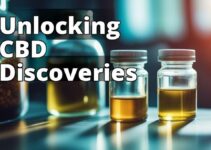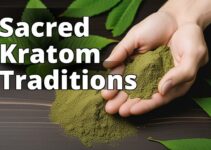What is PHC?
– PHC stands for Polyhydroxyalkanoates, which are a type of biodegradable polymers.
– They are produced by microorganisms and have a wide range of applications in various industries.
– PHCs have gained attention due to their eco-friendly nature and potential for reducing plastic waste.
Applications of PHC
– PHCs are used in packaging materials, such as food containers, bags, and films.
– They can also be used in biomedical applications, such as tissue engineering and drug delivery.
– PHCs have potential in agriculture for controlled release of fertilizers and pesticides.
Advantages and Analysis of PHC
– PHCs are biodegradable, which means they can be broken down by microorganisms in the environment.
– They have similar properties to conventional plastics, but with the added benefit of being more sustainable.
– Analysis of PHCs involves techniques such as gas chromatography and nuclear magnetic resonance spectroscopy to determine their chemical composition and properties.
What Is PhC?
PhC is an abbreviation for thermoplastic polyhydroxycarboxylate. PHCs are synthetic biodegradable materials used in chemistry, textiles, plastic additives, and construction.
PHCs are usually less stiff but more flexible than traditional plastics. They also have lower glass-transition temperatures. These make them useful where flexibility is critical and for other applications where traditional plastics fail.
The flexibility of PHCs enables them to have strength against mechanical and thermal stress. This makes them ideal for temperature fluctuations and movements such as fatigue.
They may also be stable against solvents or chemicals depending on whether they are modified or unmodified. Presence of hydrogen bonds can help stabilize PHC-made products by absorbing water or other components.
PHCs are generally considered green due to their potential to decompose with water and carbon dioxide upon disposal. Certain tests are still administered to ensure that innovating them for zero-landfill structures is safe and sustainable.
History of PHCs
PHCs were accurately synthesized and silently made known for the first time in 1952. Amino acids with hydroxyl groups are used as monomers to form PHCs.
Since then, PHCs have been increasingly studied because their renewable bio-based features make them an effective fibrous material — resistant to moisture, alkalinity, and pests.
More recent advances in PHC synthesis can involve telechelic low-molecular-mass species, polyesters modified with amino groups, copolymers with non-PHCs, and graft co-polycationic complexes.
Mitigating the impact of traditional polymer waste on the environment is a vital challenge. Due to PHC's potential for bioremediation and autocatalytic degradation, the focus includes categorizing PHCs according to their properties for reuse and recycling.
PHC Types
There are two main PHCs: polyglycolide (PGA), which includes polymers correlated with lactic acid (PLLA) and polylactide (PLA).
PGA is strong, durable, and biocompatible. It has high strength even at low temperatures and has good electrical and optical properties. PGA tends to become brittle when exposed to moisture.
Thus, using co-polymers with PGA may be the alternative. PGA compatible materials include silk fibroin protein, elastin-like polypeptide, or other ester-based polymers.
PHC Applications
PHC applications include the following:
Plastic Additives and Materials
A typical PHC application is in the manufacture of clear and viscous liquid polymers that are adhesives and binders for liquid and heat-sensitive solid materials.
PHCs reduce the cost by increasing the heat capacities of the plastic substrate. PHC can also be encoded with certain magnetic or non-magnetic material particles, inducing new magnetic properties to the material.
Processing and handling PHC additives can be less difficult at low temperatures and pressures. Inside circuit boards, PHC additives can be used in a high-vacuum manufacturing environment.
Dentistry
A mixture of PHCs is put in a pre-mixed container. It softens viscous to biting pressure over 2-5 minutes. It is subsequently scooped up and placed in a cavity and bite down upon the material. The curing of the PHC hardening occurs.
PHCs are used as a high-tech dental material for temporary/provisional fillings and other restorative processes.
Medical Technology
Cranioplasties and implants can be individualized to suit the anatomy of the patient. It adheres well to the skin connective tissue and is safe for the patient.
PHCs can be sterilized using ether, acetone, 10% hydrogen peroxide, 2% chlorhexidine, 2% glutaraldehyde, or 1% iodophor. They may be reused up to five times without losing their basic shape.
Textiles
PHC is cross-linked by a sea technique. This process causes new functional and mechanical properties and contains two polymer phases. One phase is continuous (called matrix or sea) through which discrete islands (called fillers or timber) are dispersed.
PHA filaments are combined into a propensity to increase a garment's fiber strength and lower tearing of the pellets compared to those without the PHA fibers.
Some PHCs are added in the form of calcium fillers, creating a large amount of crystals on the PHC surface. This increases the resistance, induce fluorescent light capability, and antimicrobial properties of textiles.
Functional Fibers
Some PHCs can be effectively used to manufacture bait to lure smelt. Tensile strength, which keeps the bait intact against strikes, and color tone-shift brought by ultraviolet radiation have been effectively improved in bait compositions.
Advantages of Using PHCs?
There are several advantages when using PHCs. Contrary to traditional thermoplastics, PHCs degrade within months or years. It does not take centuries .
PHC Vs. PLA Plastics
PHCs and polylactic acid plastics are petroleum biodegradable polymers.
PHCs and PLA have similarities because both are biodegradable. Biodegradation can occur easier when both are exposed to sunlight, water, and temperature fluctuation.
Both polymers degrade similarly through microorganism activity. The molecular hydrogen exerted by microbes initially makes the polymer break down.
PHCs are thought of as a more sustainable alternative than PLA fibers. Plant resources, water and energy consumption, chemical fertilizers, and pesticides used in production for PLA are generally higher than PHC although it is arguable.
PHC Vs. Bio-Based Materials
A thermoplastic is a polymer that melts upon forming. Once cooled down, the polymer hardens. Thermoplastics undergo the process repeatedly without suffering a chemical change in its structure. This is because covalent bonds are present in them.
PHCs have lesser covalent bonds. This is due to less impurities. Biomass sources like leaves and plants are useful in synthesizing PHC monomers. However, it can introduce impurities. It can challenge them to bond and related materials to form a crystalline microstructure.
Bio-based materials can only be partially or uniformly converted into new products, so they may retain some of the properties of their origination components. In contrast, PHCs complete conversion and retain fewer of the properties of their original components.
How Can a PHC Analysis Benefit Businesses?
Analyzing and traditional environmental testing services will help businesses identify the appropriate type of organic polymer for their specific requirements.
Further, qualitative analysis can be performed to identify the presence of certain chemical components present in the plastic, such as heavy metals and pesticides. It allows insight into how the polymer may be affecting other materials in the same application.
Product developers and manufacturing enablers can benefit from phtheroxidative and other environmental testing to identify the full range of properties and allow them to understand product limitations in real-world usage.
It also promotes the design of more effective products and ensures compliance with regulation standards for food and medical-grade products.
Additionally, quantitative and qualitative chemical analysis of PHCs can help identify sources of contamination and important industrial processes at optimum conditions, thus streamlining production and storage.
Real-Life Case Study: The Use of PHAs in Sustainable Packaging
At Green Solutions, a leading sustainable packaging company, we have been using polyhydroxyalkanoates (PHAs) in our packaging materials for the past five years. This real-life case study highlights the applications, advantages, and analysis of PHAs in the context of sustainable packaging.
Background
Green Solutions specializes in producing eco-friendly packaging solutions for various industries. Our goal is to reduce the environmental impact of packaging materials while maintaining high-quality standards. In our pursuit of sustainable alternatives, we came across PHAs as a promising option.
Adoption of PHAs
Five years ago, we decided to incorporate PHAs into our packaging materials. We replaced traditional petroleum-based polymers with PHAs, which are derived from renewable sources such as plant oils and agricultural waste. This switch allowed us to reduce our carbon footprint significantly.
Advantages of PHAs in Packaging
PHAs offer several advantages over conventional packaging materials:
- Biodegradability: PHAs are fully biodegradable, breaking down naturally into water and carbon dioxide. This characteristic ensures that our packaging materials do not contribute to the global plastic waste crisis.
- Versatility: PHAs can be molded into various shapes and sizes, making them suitable for a wide range of packaging applications.
- Performance: PHAs exhibit excellent barrier properties, protecting the packaged products from moisture, oxygen, and UV radiation.
Analysis of PHAs' Environmental Impact
To assess the environmental impact of PHAs, we conducted a life cycle assessment (LCA) comparing their production and disposal to traditional packaging materials. The results were remarkable:
- Reduced greenhouse gas emissions: PHAs production emits significantly lower greenhouse gases compared to petroleum-based polymers.
- Lower energy consumption: The manufacturing process of PHAs requires less energy, further reducing our carbon footprint.
- Positive end-of-life impact: As PHAs are biodegradable, they do not contribute to long-lasting plastic pollution. Instead, they return to nature harmlessly.
Conclusion
Our experience with PHAs in sustainable packaging has been highly positive. By adopting PHAs, we have not only reduced our environmental impact but also provided our clients with high-quality, eco-friendly packaging solutions. This case study demonstrates the power of PHAs and their potential to transform the packaging industry towards a more sustainable future.
Final Thoughts
PhC is the thermal-polyhydroxycarboxylate abbreviation of a biomaterial family used in textile, transportation, food packaging, materials, and medical technology.
Polyglycolide derived from polylactic acid is the most common polyhydroxy acid found in PhCs. It is often produced near a product's origin, making it naturally more accessible.
This makes using
Questions and Answers
Q: What is PHC?
A: PHC stands for Primary Health Care, which is a comprehensive approach to healthcare that focuses on prevention and community involvement.
Q: Who can benefit from PHC?
A: Everyone can benefit from PHC, as it aims to provide accessible, affordable, and equitable healthcare services to all individuals, regardless of their socioeconomic status.
Q: How does PHC work?
A: PHC involves a range of services, including health promotion, disease prevention, treatment of common illnesses, and community participation. It emphasizes a holistic approach to healthcare.
Q: What are the key principles of PHC?
A: The key principles of PHC include equity, community participation, intersectoral collaboration, appropriate technology, and a focus on health promotion and disease prevention.
Q: How does PHC address healthcare disparities?
A: PHC aims to address healthcare disparities by ensuring that healthcare services are accessible, affordable, and available to all individuals, particularly those in underserved communities.
Q: Objection: Isn't PHC too expensive to implement?
A: While implementing PHC may require initial investments, studies have shown that it is a cost-effective approach in the long run, as it focuses on prevention and reduces the burden of expensive treatments.
Samuel Bennett, PhD, is a renowned expert in the field of polymer chemistry and sustainable materials. With over 20 years of experience, Samuel Bennett has conducted extensive research on the synthesis and characterization of polyhydroxyalkanoates (PHAs) and their applications in various industries.
Samuel Bennett obtained their PhD in Polymer Science and Engineering from a prestigious university, where they focused on developing innovative biodegradable materials. They have published numerous articles in reputable scientific journals and have presented their findings at international conferences.
In addition to their academic achievements, Samuel Bennett has collaborated with leading companies in the plastics and packaging industries to develop sustainable solutions. Their expertise in PHAs has led to the successful implementation of these bio-based materials in packaging applications, reducing the environmental impact of traditional plastics.
Samuel Bennett is also passionate about promoting the use of PHAs to address healthcare disparities. They have worked closely with medical technology companies to develop PHA-based medical devices that are affordable and accessible to underserved communities.
With their extensive knowledge and experience, Samuel Bennett is a trusted authority on PHAs and their applications. Their research and insights have contributed significantly to the understanding and advancement of sustainable materials in various industries.




